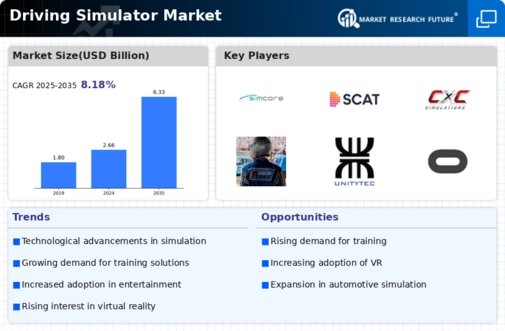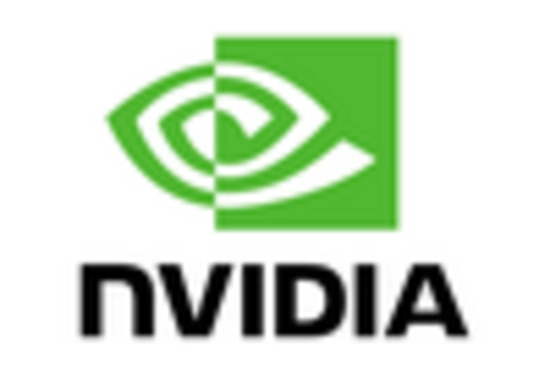The Driving Simulator Market is currently characterized by a dynamic competitive landscape, driven by technological advancements and increasing demand for realistic training solutions across various sectors, including automotive, aviation, and gaming. Key players such as Siemens (DE), Hexagon AB (SE), and NVIDIA Corporation (US) are at the forefront, leveraging innovation and strategic partnerships to enhance their market positioning. Siemens (DE) focuses on integrating advanced simulation technologies into its offerings, while Hexagon AB (SE) emphasizes data-driven solutions to optimize performance. NVIDIA Corporation (US) is heavily investing in AI and graphics technologies, which are crucial for creating immersive driving experiences. Collectively, these strategies not only enhance their competitive edge but also shape the market's evolution towards more sophisticated and integrated solutions.
In terms of business tactics, companies are increasingly localizing manufacturing and optimizing supply chains to respond swiftly to market demands. The Driving Simulator Market appears moderately fragmented, with a mix of established players and emerging startups. This structure allows for diverse offerings, yet the influence of key players remains substantial, as they set benchmarks for quality and innovation that smaller firms strive to meet.
In September 2025, Siemens (DE) announced a partnership with a leading automotive manufacturer to develop a state-of-the-art driving simulator that incorporates real-time data analytics. This collaboration is poised to enhance training efficiency and safety protocols, reflecting Siemens' commitment to innovation in simulation technology. The strategic importance of this partnership lies in its potential to redefine training methodologies within the automotive sector, aligning with industry trends towards data-centric solutions.
In August 2025, NVIDIA Corporation (US) unveiled a new software platform designed to enhance the realism of driving simulations through advanced AI algorithms. This initiative is significant as it positions NVIDIA at the cutting edge of simulation technology, enabling developers to create more lifelike environments and scenarios. The implications of this development extend beyond gaming, potentially impacting sectors such as driver training and autonomous vehicle testing.
In July 2025, Hexagon AB (SE) expanded its portfolio by acquiring a simulation software company specializing in virtual reality applications for driver training. This acquisition is indicative of Hexagon's strategy to broaden its technological capabilities and enhance its competitive positioning in the market. By integrating VR into its offerings, Hexagon aims to provide more immersive training experiences, which could attract a wider range of clients across various industries.
As of October 2025, the Driving Simulator Market is witnessing trends that emphasize digitalization, sustainability, and the integration of AI technologies. Strategic alliances are increasingly shaping the competitive landscape, as companies recognize the value of collaboration in driving innovation. Looking ahead, competitive differentiation is likely to evolve from traditional price-based competition to a focus on technological advancements, innovative solutions, and reliable supply chains. This shift underscores the importance of adaptability and forward-thinking strategies in maintaining a competitive edge in a rapidly changing market.

















Leave a Comment